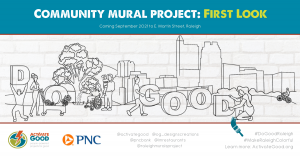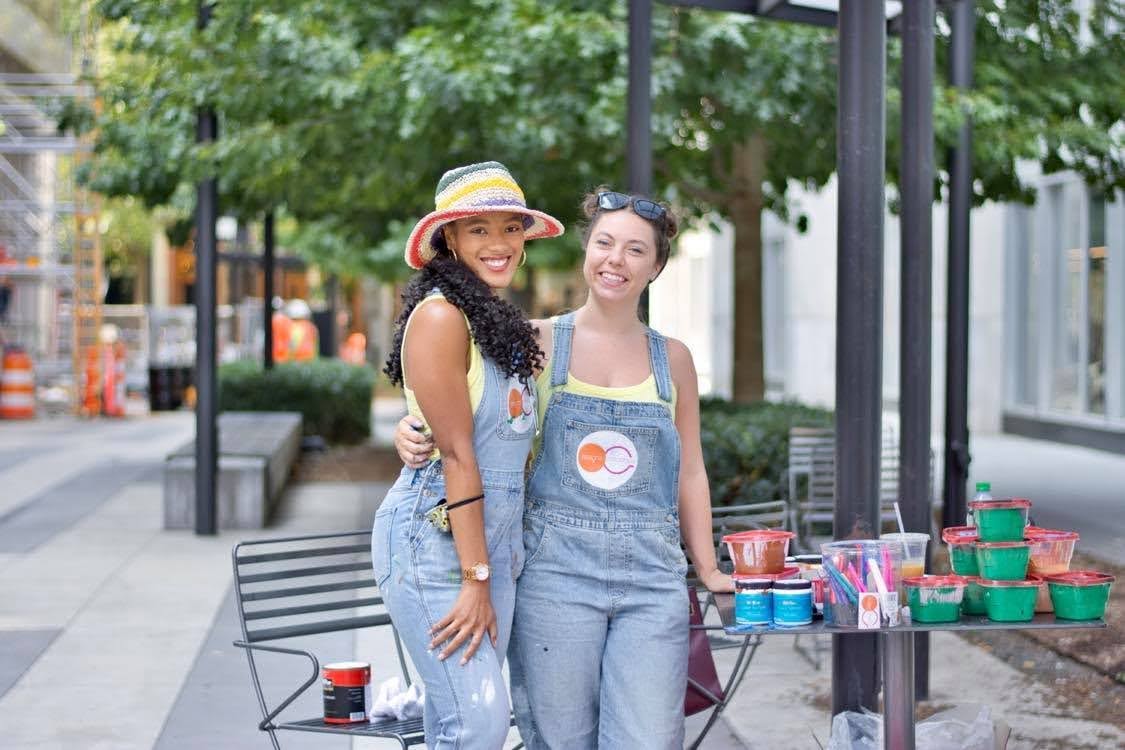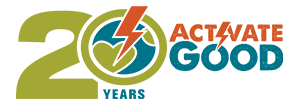Creating the Raleigh Do Good Mural
Earlier this month, more than 100 community volunteers contributed their time and talent to the Community Mural Project, a collaboration between Activate Good and the Raleigh Murals Project, with support from PNC Bank and LM Restaurants. Volunteers’ efforts resulted in the creation of a vibrant, inspirational mural, located at 19 E. Martin St. in Downtown Raleigh. The mural, which bears the message, ‘Do Good,’ came to life Sept. 10-12, in observance of the 20th anniversary of 9/11 and in commemoration of Activate Good’s September Month of Service.
Instrumental to the design and creative execution of the mural were Okirah Harris (OH) and Grayson Howell (GH) of OG Designs and Creations. Activate Good (AG) sat down with them to discuss the unique aspects of the project, their sources of inspiration, and what they hope the community will take away from the mural’s universal and enduring message.
AG: How would you describe the overall vision for this mural?
GH: Community service was central to this mural – both from an engagement and content perspective. Volunteers took part in the actual creation of the mural, while the mural itself shows community service in action.
OH: In designing this mural, our intent was to communicate a clear message of unity. Beyond creating something beautiful, we wanted to visually share the sentiment that Raleigh is inclusive – that all people belong and are welcome here.

AG: What are some of the artistic elements that make this mural decisively Raleigh-inspired?
OH: We believe that representation, no matter how subtle, matters. It was important to us that the mural reflect the people of Raleigh and a rich diversity in age, race and ability, as well as individual acts of community service. Our use of color, with the people and ‘Do Good’ message painted in vibrant shades and the city skyline captured in subtler shades, was intentional. We used color to convey that people and their actions create community.
AG: This mural came to life with assistance from local volunteers, including children. Can you talk about the significance of engaging the community in the activation of this project?

GH: We wanted each volunteer to understand that it wasn’t necessary to be a Picasso in order to contribute to this project. That was reflected in the way we designed the mural, which was largely composed of large, single-colored sections. My background, which includes experience leading paint and sip classes, combined with Okirah’s strengths as a visual communicator, helped us translate the mural design into a paint-by-numbers format, making it possible for volunteers to execute the painting as we envisioned.
OH: Because we knew that children would be participating in this project, we were intentional about ensuring that height was not a barrier and that the mural design was low enough on the wall to be accessible to young children.
AG: In what ways did the current environment, including the observance of the 20-year anniversary of 9/11, influence your artistic vision for this project?
OH: I can vividly remember how life came to a halt on Sept. 11, 2001. It was as if everyone around me took one collective gasp. There were many emotions. Because I was so young at the time, I wasn’t able to provide the assistance and comfort that people needed most in that moment. But what I can do now is participate in the remembrance of that day, and help others channel their unique experiences and emotions into creating art.
AG: When people walk by this mural, what do you hope they’ll take away from the message and art?
OH: It’s our hope that this mural incites enthusiasm for community service and encourages people to contribute to the community in any way they can.
GH: We also hope that the volunteers who participated in this project will take great pride in their contributions and that they’ll revisit the mural for years to come.


